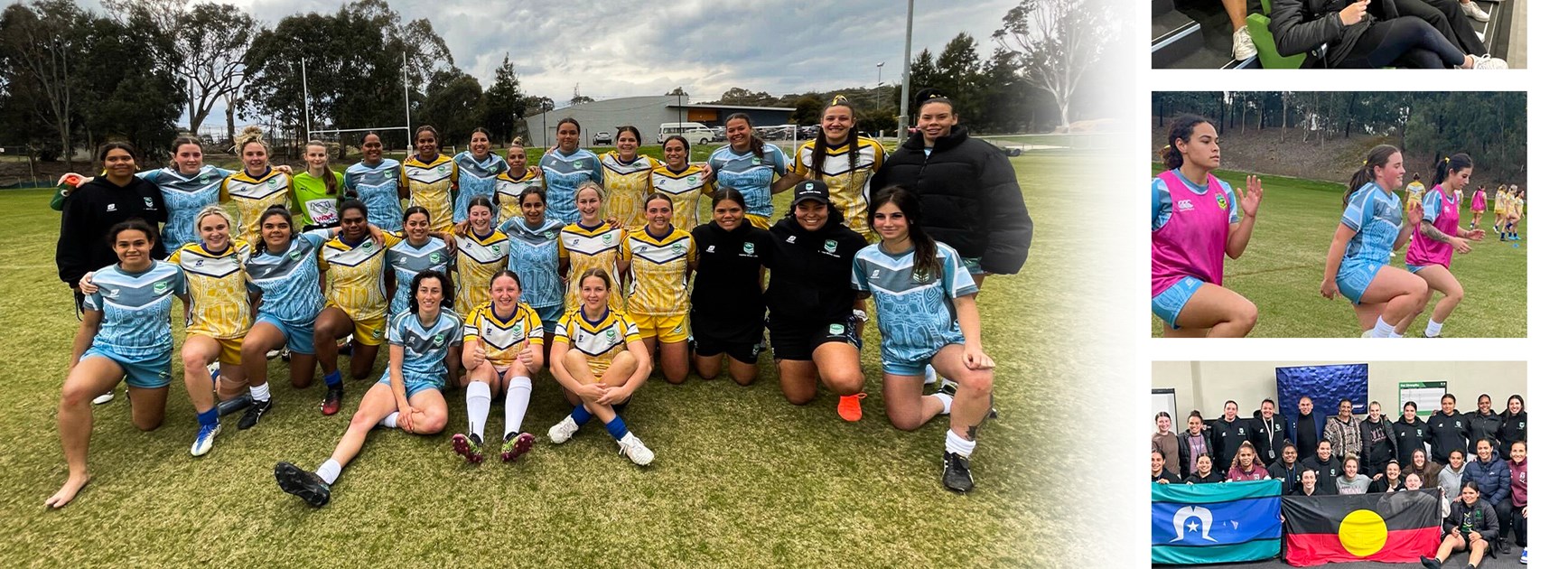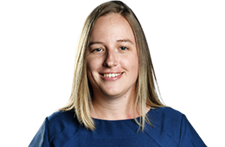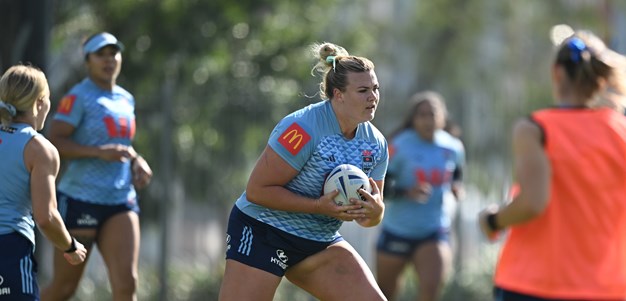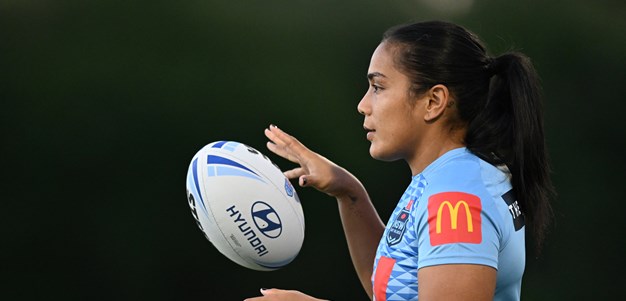A ground-breaking female athlete study, visits by the Governor General of Australia and a full-time rugby league program designed to cater both on and off-field development.
It’s been a massive five weeks for 26 aspiring NRLW players in Canberra.
Closing the gap in research between males and females around athletic performance has been at the forefront of the Indigenous Women's Academy camp at the Australian Institute of Sport.
The NRL partnered with the AIS, Australian Catholic University and Boston Children's Hospital's Wu Tsai human performance's female athlete innovation hub to deliver a five-week program.
The aspiring group from across various Indigenous and Torres Strait Islander communities have sacrificed over five weeks of their time to be part of the history-making study.
The players trained full-time at the AIS while being monitored and supported daily by 12 female researchers conducting 10 different studies.
"A lot of research we’ve done in sport is from males and then directly used for females so we’re really interested to understand the differences and what makes females unique," ACU researcher Alannah McKay told NRL.com.
“A lot of that involves the menstrual cycle and how much their hormones change and affect different body systems, the effects of performance, body composition, iron status and a lot of metabolic processes.
“And then some conditions that are specific to females like breast pain and pelvic floor dysfunction.”

The all-female research camp is the first of its kind for the AIS and ACU after previously doing male-only or a split of male and female cohort studies in different areas of sport.
Some females players have gone through the camp on their menstrual cycle naturally while others may be on contraceptives - either way it's allowed researchers to study both to see if any further trends develop with performance.
“We met the girls two months ago and since then I’ve tracked their menstrual cycle,” McKay said.
"By the time they get to camp I’ve identified some interesting phases which we want to look at and study from a research perspective."
McKay said there was a "big misconception" for female athletes when it comes to their menstrual cycle.
Many female athletes' periods can stop during elite performance naturally, which can be a red flag.
"It’s one of the biggest things we’ve had to change the thinking with our female athletes," she said.
"It’s almost seen as a badge of honour to training hard but it’s the complete opposite. It’s the number one sign that something is not quite right."
The results of the study is likely to take months to crunch the data and see if there were any major trends, particularly specific to the Indigenous population.

"The best things about having this group in is they are so thirsty for knowledge and are asking so many questions," McKay said.
"They’ve been such a joy to work with more generally because they’re so interested.
"There will be a lot of analysis to do so we’re still months away from some direct outcomes but we’re really hoping to inform the way female athletes train in their specific environments.
"There are lots of different avenues and outcomes that could come out of it. The NRL has also spoken to us about issues they see with female cohorts.
"We’ve taken that on board to investigate those things and feed it back to the NRL."
Life of a full-time athlete
Esther Kebisu is a teacher’s aide and young rugby league player from Yam island in the Torres Strait who started playing as a teenager for the Northern Mendi Marlins.
She knew few of the people she was going to spend the next six weeks with but was in constant dialogue with First Nations Gems coach Jess Skinner, who is also the NRL’s pathways strategy manager.
Skinner was the main organiser behind the program and is passionate about moving forward Indigenous females in the rugby league space.

Kebisu joins the other players in the nation’s capital training five days a week, Monday to Friday, with up to three field sessions and three gym sessions scheduled.
It's the first time Kebisu had been in a gym.
"She's a good example of if you give someone an opportunity with leading experts in different fields she'll be able to take that knowledge back with her and educate others and inspire them," Skinner said of Kebisu.
In-between their training sessions, players are tested every morning which includes blood and iron levels, given 30-minute windows to eat meals throughout the day before finishing in the evening with either social or educational sessions.
Education sessions across the five weeks included visits from representatives across a range of fields including well-being, nutrition, media and social media.
They are given the weekend’s off to explore the sights of Canberra or in some cases for local players, head home for a couple of days.
Skinner is also big on having the players connect to country as much as possible throughout the camp.
"The most important thing was that we let the local community, the Ngunnawal people, know we had over 25 Indigenous and First Nations people on their land for this time," Skinner said.

"Dean Widders and I did a lot of work before the camp around that and did a welcome to country ceremony with the traditional owners. We've had passed Indigenous and First Nations Olympians come in and speak with the group.
"We wanted everyone to feel culturally safe and feel welcome to the Ngunnawal people. That's really important for us."
Visit of a lifetime
On August 30, the players and staff at the AIS were invited to the Government House in Canberra to meet with the Governor-General of Australia, the honourable David Hurley, and Her Excellency Mrs Linda Hurley.
Mrs Hurley sang a custom-made song to the players in relation to their program while the squad also delivered a heart-felt rendition of Indigenous song Inanay in return.

The players left such an impression on Mrs Hurley that they were later invited into her private residence shortly after, an offer that few others have ever had the privilege of doing.
The following day, their excellencies joined the players at NSWRL headquarters in Canberra, the former Raiders gym, to watch their program first-hand.

Staying connected
Skinner hopes the IWA program is the start of more projects involving female athletes, particularly in Indigenous and Torres Strait Islander communities, with the growth of the NRLW in the next 12 months to a decade.
"The biggest thing for me is that the girls leave with what is expected at the next level with strength and condition, recovery, preparation for training... all of that is enormous," she said.
"We'll be seeing these players for the next 2-3 years in NRLW clubs so basic things like having the education in the gym, our girls are going to be more confident and overall they're leaving as better people.
"They are all starting to feel the emotions of camp ending but we're already thinking of what happens next and we'll continue to monitor them and hopefully bring them back together again in some way next year.
"We also had 17 staff in different areas come through and that's important that we're developing them too. Some are going on to National Champs or Schoolgirls tournaments in the near future."







